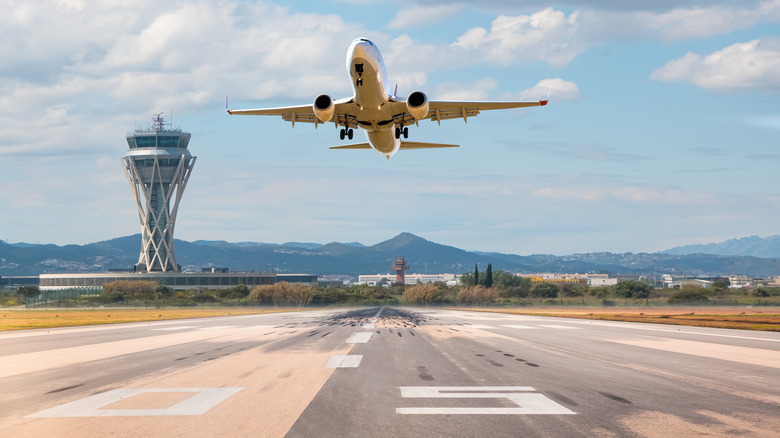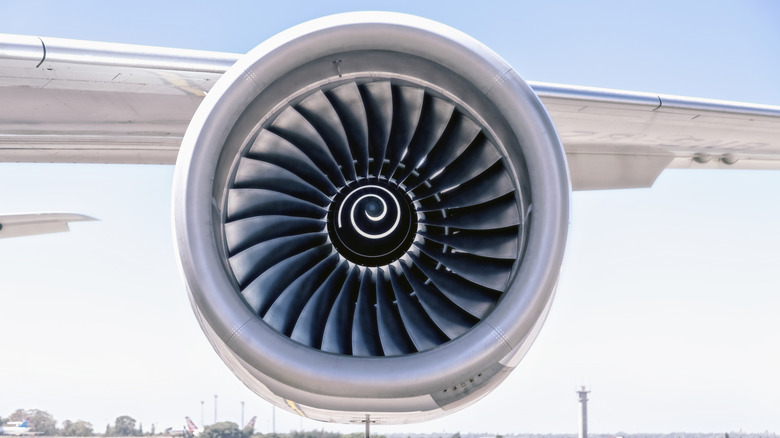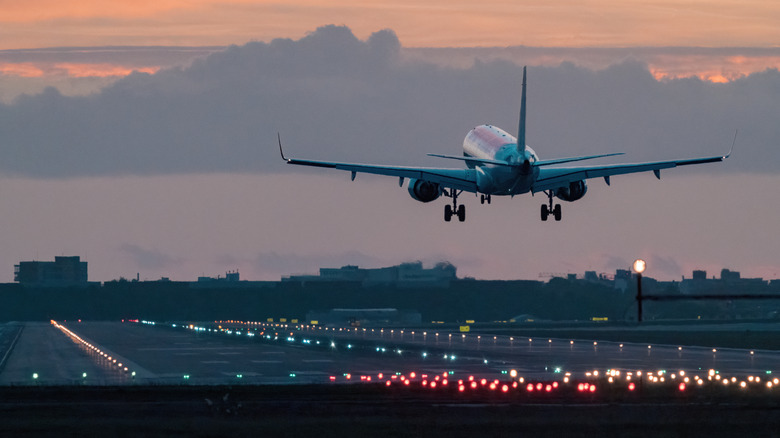Why Do Airplanes Take Off And Land Into The Wind?
A commercial airliner can weigh anywhere from 100,000 pounds to over a million pounds. It is astonishing how such gargantuan weight can not only take off from the ground, but also routinely fly long distances (sometimes even fly across the Pacific). All airplanes use air to create lift and fly, and different types of winds can alter the flight dynamics of the airplane.
An airplane typically experiences three main wind types, depending on the wind direction. Headwinds are winds blowing head-on against the plane, while tailwinds blow in the direction of the plane's movement. Crosswinds blow perpendicular to the plane's direction of travel from either the left or right.
Now, imagine a plane that's trying to take off. Think intuitively and ask yourself what wind direction should help the plane take off more easily. While tailwinds seem like the most obvious answer as they blow in the direction of the plane's motion, they can actually make taking off harder for airplanes. Airplanes usually take off and land into the wind, and there's a solid reason why.
The science behind how airplanes fly
Be it a bird or a million-pound airliner; both fly using the same principle of creating a pressure difference to generate lift. While birds flap their wings to create a lifting force, airplanes use powerful jet engines.
The basic idea is to create a difference in airspeeds below and above the wings. As pressure is inversely proportional to the wind speed, a difference in air speed leads to a difference in pressure. Gushing high speed air above the wings compared to that below the wings creates a net pressure acting on the airplane's body against gravity. This pressure and the reaction force from the downward deflection of air (due to the wing's curvature) create the lifting force that helps planes fly. That's also why airplanes can glide for a significant distance even when their engines fail due to the constant gush of high-speed air against the wings.
During takeoff, planes travel at around 150 to 180 mph on the runway to rush high-speed air against the wings. Additionally, planes tilt their nose up during takeoff to create a bigger wind speed difference and, subsequently, greater lift to become airborne.
Why do taking off and landing into the wind helps?
Now that you know the science behind how airplanes fly, let's rethink the initial takeoff scenario and answer what wind type is best suited to ease the plane's lift from the ground. Remember, airplanes travel at high speeds on the runway to take off.
No drumrolls for guessing — it is the headwinds that help airplanes take off. Airplanes need to achieve a threshold speed, aka the minimum takeoff speed, to lift from the ground, depending on factors like aircraft size, aircraft weight, wingspan, and more. In case there is no wind, the airplane needs to achieve this minimum takeoff speed by accelerating at full speed on the runway. But with headwinds, the wind contributes to this speed, so the airplane reaches takeoff velocity faster and can even save fuel.
In fact, headwinds facilitate landings, too. During landing, headwinds help slow down the plane, requiring less runway and reducing stress on the airplane's tires, which helps prevent the cause of tire explosions.


